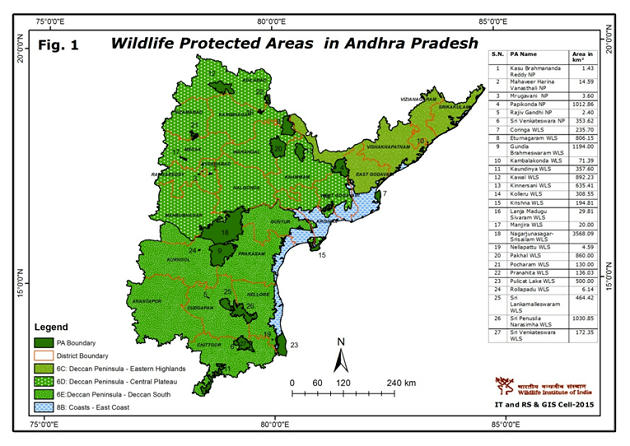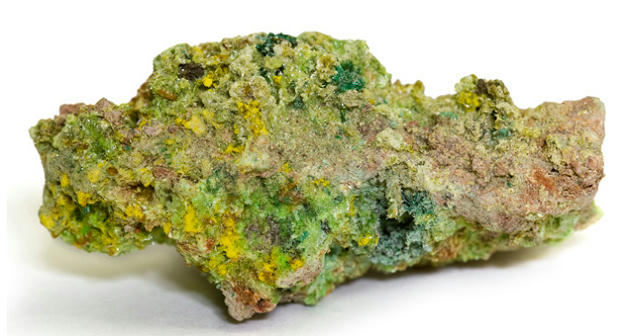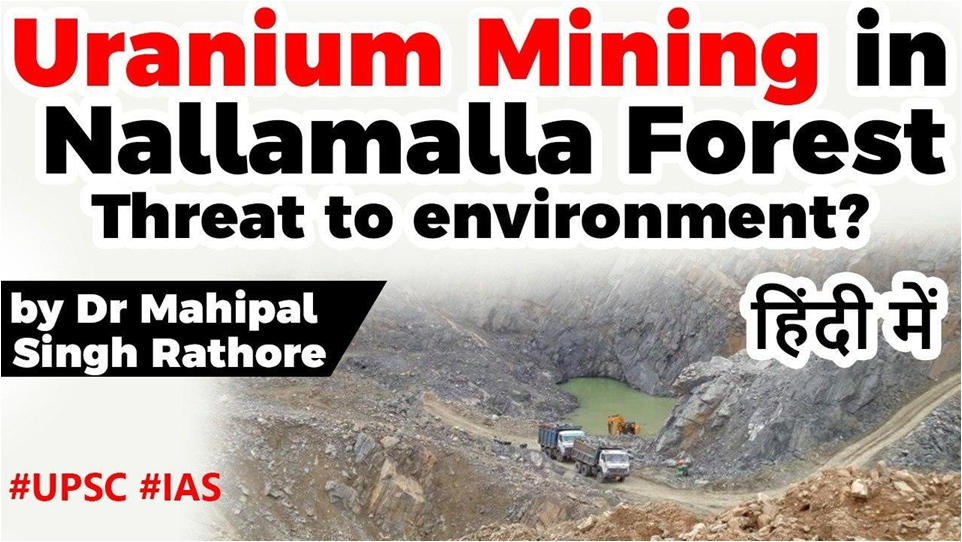Table of Contents
- The Ministry of Environment and Forests & Climate Change’s (MoEFCC) has given in-principle approval for survey and exploration of Uranium in 83 sq km area of Nallamalla hills.
- The approval had been sought by Atomic Minerals Directorate
- The issue had sparked a huge uproar in Telangana and Andhra Pradesh in 2019
Who has the authority to approve mining of Uranium?
- Since Uranium is a major mineral, it is managed by the Union Government under provisions of Mines and Minerals (Development and Regulation) Act, 1957.
- The policy and legislation relating to Major minerals are managed by the Ministry of Mines
- But Uranium being an atomic mineralis managed by the Department of Atomic Energy (DAE).
Existing uranium mines in India
- Tummalapalle
- Jadugoda
- Bhatin
- Turamdih
- Narwapahar

Has mining started already?
- Prospecting is going on
- The Uranium Corporation of India Limited has allegedly drilled over 4,000 boreholes for uranium survey across Nallamalla forest
- Uranium is used as a fuel for nuclear power reactors for electricity generation, in the manufacture of radioisotopes for medical applications and in nuclear science research.
‘Save Nallamalla Forest’
- Multiple organizations, including political parties, several environment activists had come together in both the Telugu speaking states to form the ‘Struggle Committee against Uranium Mining’
- What are the objections?
- Disastrous effects on the air, rivers, groundwater and the entire ecosystem.
- Krishna river will get polluted if the mining begins, which is the main source of drinking water for the residents of 2 states
- Threat of polluting the large water body of Nagarjuna sagar reservoir.
- Tiger reserves and WLS
- Infrastructure will be developed to support mining operations – fragmentation of habitat


The Tiger reserves
- Nagarjunsagar-Srisailam Tiger Reserve – the largest Tiger Reserve in India.
- Amrabad Tiger reserve
- According to latest government estimates, the forest has 74 tigers and 80 leopards among other wildlife.

Threat to Tribal people
- There are 10,671 families comprising of 41,780 people belonging to Chenchu adivasi community, who are living in six districts across Nallamalla forest.
- These districts include Mahaboobnagar, Nalgonda and Rangareddy in Telangana, and Guntur, Prakasam and Kurnool in Andhra Pradesh.
- Chenchu are one of the 75 Particularly Vulnerable Tribal Group (PVTG)

Why is Uranium ore dangerous?
- When uranium ore is extracted from the ground, 28% of the mined ore is treated as waste as the uranium isotopes used in nuclear power plants mainly is uranium-235,
- leaving behind the major portion of the ore which constitutes of uranium-236 and uranium-238 as well as some other components.
- This waste (also referred to as tailings) is then neutralised with lime and carried through pipelines to a tailing pond.



Threat to surrounding
- If uranium tailings are stored aboveground and allowed to dry out, the radioactive sand can be carried great distances by the wind, entering the food chain and bodies of water.
Energy Requirement
vs.
Conservation of environment
- Currently, twenty-two nuclear power reactors have a total installed capacity of 6,780 MW
- This equals to about 2% of total installed base capacity of power generation in India

- Under pressure from protestors, Telangana state Assembly on September 16 2019, passed a unanimous resolution, urging the central government to stop uranium mining activities in Nallamalla forest in the state.
- However, the UCIL has continued its survey.
Latest Burning Issues | Free PDF






















 WhatsApp
WhatsApp